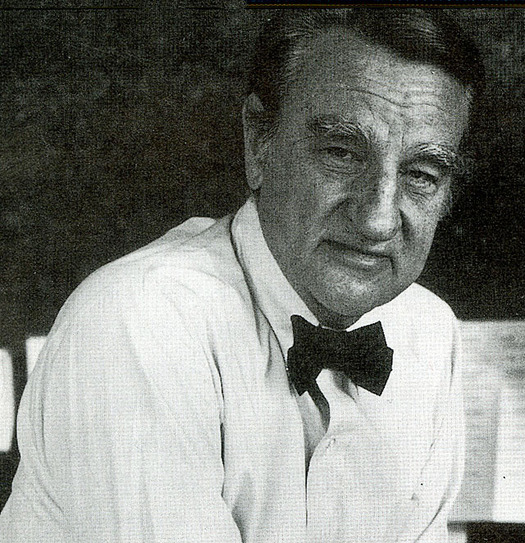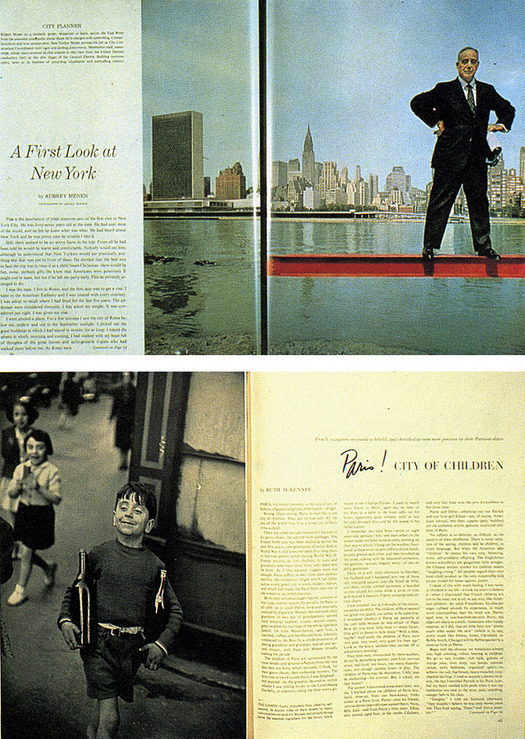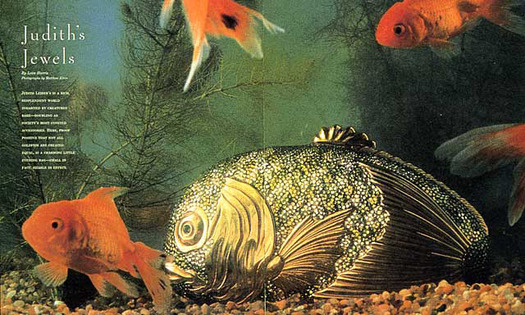
Frank Zachary. Photograph by Linda Stillman. (via AIGA)
Not long ago Risë Stevens, a once-famous Metropolitan Opera soprano and the most charming Carmen of her day, died at the age of ninety-nine. I remember, as a kid, seeing Stevens frequently on the Ed Sullivan Show, long before I ever went to an opera. I don’t know that her singing made much of an impression on my callow young ears, but my mother, a classical musician herself, let me and my brother know that this was singing at its finest.
I hadn’t heard the great soprano’s name for many years, and I probably assumed that she was long dead. Her The New York Times obituary brought back some of my past as well as much of hers. And got me thinking about what happens to prominent, successful people when they slide into very old age. And that, in turn, got me thinking about a hero of mine and sometime mentor, Frank Zachary, one of the last of the great editors and art directors of what now seems the golden age of magazines, who turned ninety-nine not long ago. I worry that those of us who knew Frank, and were lucky enough to work for him, are getting older ourselves, and that his tremendous talent and eye for editorial photography is no longer known by many in the graphic design and magazine worlds.
For many years, until he retired in his late seventies, Frank was the editor-in-chief of Town & Country magazine, one of the generation of Hearst standouts that included Helen Gurley Brown at Cosmopolitan and Carmel Snow at Harper’s Bazaar.
I first met Frank not long after I became managing editor of Cosmo, at some Hearst after-work gathering. The interesting combination of a face that might have belonged to a club boxer and an enviable sense of style — bow tie, blazer, loafers with no socks — set him apart. At this time he had probably been in his job top editing Town & Country for four or five years, but he had so thoroughly made the magazine his own, in the process increasing its revenue tenfold, that he stayed in the job for a couple more decades, well into his seventies.

Spreads from Holiday magazine: top, 1958, photograph by Arnold Newman; bottom, 1952, photograph by Henri Cartier-Bresson. (via AIGA)
A few years later, when I was executive editor of Sean Callahan’s excellent magazine American Photographer, I managed to get Frank to write a short essay, which took some doing. Though he had aspired to be a writer in his youth, he explained to me why that hadn’t worked out. His first job was as a multi-tasking reporter on a weekly magazine in Pittsburgh called the Pittsburgh Bulletin Index. While he was there, a new editor arrived, the budding best-selling novelist and short story writer John O’Hara. Frank was working hard to master the writer’s trade at the time. But he often saw O’Hara roll paper into his typewriter, spend an hour or so quickly tapping away, words, glance quickly through the pages without making any changes, then putting the pages into an envelope addressed to New York. A few weeks later, an impeccable O’Hara story would appear in The New Yorker. Frank told me that he assumed this was the way writing happened, as opposed to the arduous process he grappled with, and with that he gave up the whole idea.
Like most men and women of his generation of magazine folk — ink-stained wretches, as he liked to say — Frank had what we used to call a “checkered career.” After leaving Pittsburgh, he went to New York and, after helping put out a couple of government sponsored magazines during World War II, he took on a magazine called Mini Cam (at a time when hand held cameras were just becoming the norm) and turned it into Modern Photography. In 1949, he and a Mini Cam associate George Rosenthal Jr. started an art and cultural magazine they called Portfolio, hiring as their art director the formidable Russian émigré Alexei Brodovitch. The idea was simple enough: Create the greatest visual magazine America had ever seen, and in the opinion of those lucky enough to own the three issues that represent the magazine’s entire life span, they succeeded brilliantly. No expense was spared — one issue came equipped with special glasses for viewing pictures in 3-D, another featured the first art created by Xerography, Paul Rand was hired to design a letterhead — and advertising was eschewed, leading, alas, to the magazine’s untimely demise.
As picture editor and later art director of Holiday magazine — where it so happens I published my first story for actual money back in 1967 — Frank assembled a formidable repertory company of photographers, including Slim Aarons, Henri Cartier Bresson, Robert Capa, and Arnold Newman, and sent them out into the world with free rein and ample budgets. This was a glorious, profligate time when a photographer or illustrator would be told to bring back the essence of Hamburg or Venice and never told not to eat, drink and live very, very well. (The recent May Vanity Fair contains a fine story about Holiday in its heyday.) Most of these stalwarts followed him when he became editor of Town & Country in 1972, where he turned what had been a chronicle of debutante balls and charity galas into a well-written, wonderfully illustrated, often cool, witty and wry look at the glittering world of the moneyed few. Frank’s strength, I think, was that though he didn’t come from money, he neither idolized nor envied nor secretly disdained the rich. Like a good anthropologist, he studied this particular tribe, figured out what was most interesting about them and their habitats, and found writers and photographers who could show their world in the most entertaining way. (I will never forget a Slim Aarons photo of a very rich Palm Beach wife posing on a bed with a stuffed hammerhead shark. Priceless!)
I worked very briefly for Frank in the late eighties, when his good friend and deputy editor Arnold Erlich (the last man on earth to call me “kid”) died, and he asked me to come back to New York from San Francisco to sit in until a replacement could be hired. Frank offered me the job, but, for some reason I didn’t take it. However, when Frank retired, I tried out for his job, which I didn’t get. Frank was that rarest of star editors, a truly benevolent dictator. Everyone at the magazine adored him, and he was as kind and courtly as he was demanding. But when it came to final decisions on photos, layouts and typography — on all aspects of page design — Frank had the final say, and what he said always made sense. His wry eye and agile wit brought a feeling of fun and adventure to a once-staid publication. He had many of his coterie of Holiday photographers, with some talented additions to the globe-hopping group such as Tony Edgeworth and Jonathan Becker, and he encouraged them to be inventive, but always clear about their storytelling. As a result, Town & Country during Frank’s long, happy reign, was as good a magazine to look at as any at the time.

Town & Country spread, 1988, photograph by Matthew Klein. (via AIGA)
Though gregarious and sociable, Frank had learned that the more accessible an editor-in-chief is, the less time he or she will have to think about the big picture. So while the entire editorial staff worked on one floor, Frank’s office was several floors higher. The fact that you had to get on an elevator to drop in on him made you think twice about why you needed to bother him. On the other hand, Frank never let this separation become isolation. He showed up throughout the day to look at layouts, to meet with editors about current and future stories, or just to hobnob in creative ways.
In a recent editor’s note in Vanity Fair, Graydon Carter reminisced fondly about lunches he’d had with Frank and Slim Aarons at Gallaghers, the classic steak house on West 52nd Street. I, too, often had that pleasure, though I will admit that Slim’s opinionated garrulousness sometimes stifled the conversation. Frank and I, however, frequently escaped to Cipriani (where we both ordered his favorite, risotto Milanese with kidneys).
At one of these Cipriani lunches when I was still at American Photographer Frank gave me some of the most important advice I’ve ever had. I had been a AP for a couple of years — which I now realize was the best job I ever had — and I recall that I was whining about how bored I was. Frank had no sympathy. “If you’re bored,” he said, “go back to your office and invent something.”
Like much good advice, this seemed, suddenly, obvious and right on target. So I did just that, and in the course of an inspired afternoon, I invented one monthly and two annual sections that ran for several years. I felt very pleased with myself, but I really owed it all to the great FZ.
